Ağu . 14, 2025 01:40 Back to list
Affordable Automatic Embroidery Machines: Flat, Cap & Multi-Head
The Evolving Landscape of Automated Embroidery: Precision and Efficiency
The global textile and apparel industry is undergoing a significant transformation, driven by demands for higher customization, faster production cycles, and superior quality. At the forefront of this evolution is the automatic embroidery machine, a pivotal technology enabling manufacturers to meet these rigorous demands. These sophisticated systems integrate advanced robotics, software, and mechanical engineering to transform raw textiles into intricately decorated products. From bespoke fashion pieces to high-volume corporate branding, automated embroidery solutions offer unparalleled precision and speed, fundamentally reshaping production capabilities across various sectors. This deep dive explores the technological intricacies, strategic advantages, and diverse applications of modern automated embroidery solutions, providing insights critical for B2B stakeholders considering an investment in this essential manufacturing asset.
The market for automated textile machinery, including embroidery equipment, is projected to grow significantly. According to recent industry reports, the global embroidery machinery market size was valued at USD 1.1 billion in 2022 and is expected to reach USD 1.8 billion by 2030, exhibiting a compound annual growth rate (CAGR) of 6.5% from 2023 to 2030. This growth is largely fueled by increasing automation in garment production, rising demand for customized apparel, and advancements in digital embroidery technologies. Businesses adopting these technologies are not just enhancing their operational efficiency but are also positioning themselves competitively in a dynamic global marketplace.
Core Engineering & Precision Manufacturing: The DNA of an Advanced Embroidery Machine
The manufacturing of an automatic embroidery machine is a testament to precision engineering, combining robust material science with cutting-edge production techniques. The foundational frame, often constructed from high-grade steel alloys, undergoes meticulous processes such as precision laser cutting and robotic welding to ensure structural rigidity and vibration dampening during high-speed operation. Key components like the pantograph (which moves the embroidery hoop) and the needle bar system are crafted using advanced CNC machining from aerospace-grade aluminum and specialized steel, ensuring micron-level accuracy. This meticulous fabrication minimizes mechanical play, which is crucial for achieving consistent stitch quality and intricate design reproduction.
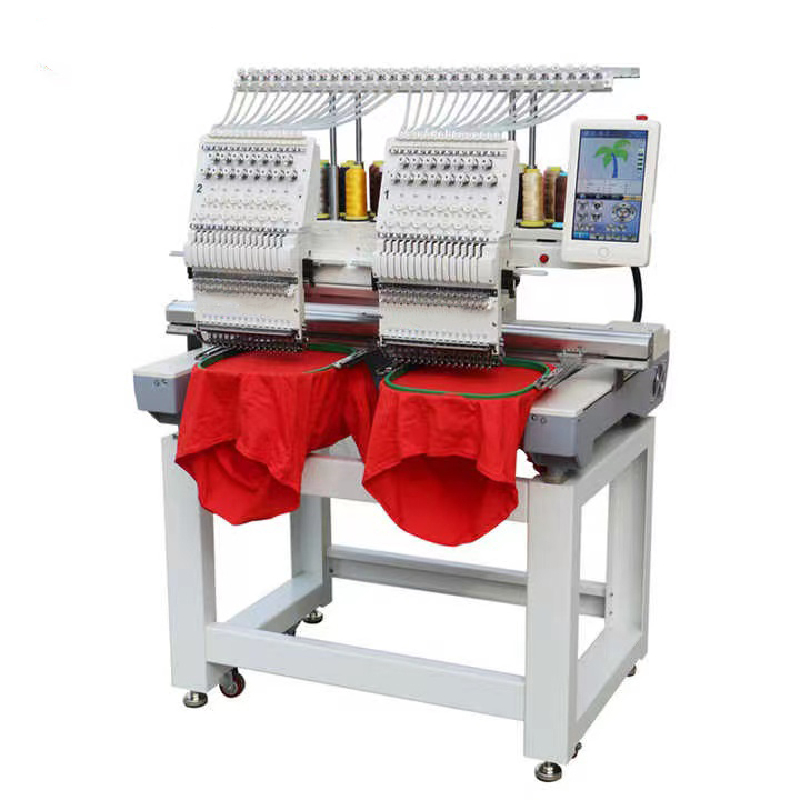
Beyond mechanical construction, the integration of sophisticated electronics and control systems is paramount. High-precision servo motors drive needle movements and pantograph positioning, governed by industrial-grade microprocessors that interpret complex digitizing software instructions. Each machine undergoes stringent quality control at multiple stages, adhering to international standards such as ISO 9001 for quality management systems and CE certification for electrical safety and electromagnetic compatibility. Every component, from the smallest rotary hook to the integrated touch-screen control panel, is subjected to rigorous testing for durability, performance, and longevity. This comprehensive manufacturing and inspection protocol ensures a typical operational lifespan exceeding 10-15 years, even under continuous heavy-duty industrial use, minimizing total cost of ownership for businesses in garment, apparel, and home textile manufacturing.
Technical Parameters: Decoding the Performance of Your Automatic Embroidery Machine
Understanding the key technical specifications of an automatic embroidery machine is crucial for making an informed investment decision. Parameters such as needle count, head count, maximum embroidery area, and operating speed directly impact productivity and versatility. For instance, machines with a higher needle count (e.g., 15 needles) offer a broader spectrum of color choices without manual thread changes, optimizing multi-color design production. Multi-head machines drastically increase output volume, making them ideal for large-scale industrial operations. The speed, measured in stitches per minute (SPM), dictates the throughput, while a generous embroidery area allows for larger, more intricate designs on various garment types. Below is a detailed table outlining typical parameters found in high-performance industrial embroidery machines:
Typical Technical Specifications for an Automatic Embroidery Machine
| Parameter | Description | Typical Range/Value |
|---|---|---|
| Number of Heads | Determines concurrent embroidery operations. | 1 to 20+ heads |
| Number of Needles per Head | Available thread colors without manual change. | 9, 12, 15, or 18 needles |
| Max Speed (SPM) | Stitches Per Minute – throughput rate. | 1000 - 1200 SPM |
| Embroidery Area (Flat) | Maximum design dimensions for flat garments. | 300x200mm to 1200x600mm+ |
| Embroidery Area (Cap) | Maximum design dimensions for caps/hats. | 270 degrees wide |
| Control System | User interface and operating software. | 7-12 inch HD LCD Touch Screen |
| Memory Capacity | Number of designs or stitches storable. | 200 million stitches / 2000 designs |
| Connectivity | Methods for design transfer. | USB, Ethernet, Wi-Fi |
These specifications determine a machine's suitability for specific production needs, whether it's high-volume production with a multi heads embroidery machine or versatile customization with a flat embroidery machine that also handles caps. Understanding these metrics empowers businesses to select machinery that aligns perfectly with their operational demands and growth projections.
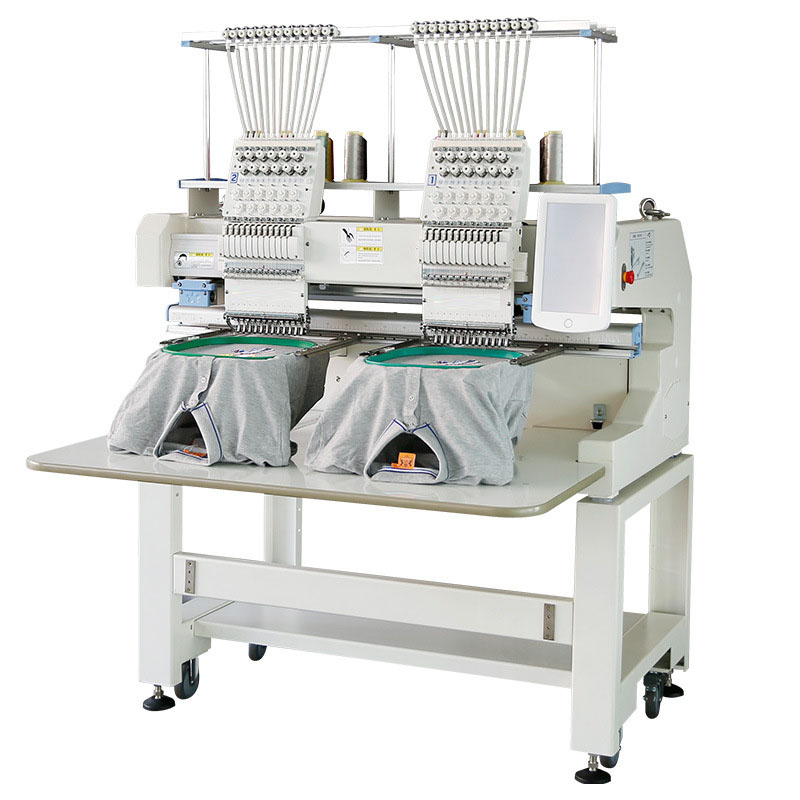
Versatile Application Scenarios & Technical Advantages
The versatility of an automatic embroidery machine extends its utility across an impressive range of industries and applications. In the garment sector, they are indispensable for adding intricate logos, decorative motifs, and personalized designs to t-shirts, polo shirts, jackets, and sportswear. The ability to switch between flat embroidery machine mode for general garments and cap embroidery machine mode for headwear, often on the same machine, offers incredible operational flexibility. This adaptability is critical for businesses that serve diverse client needs, from fashion brands requiring high-quality embellishments to promotional product companies delivering branded merchandise.
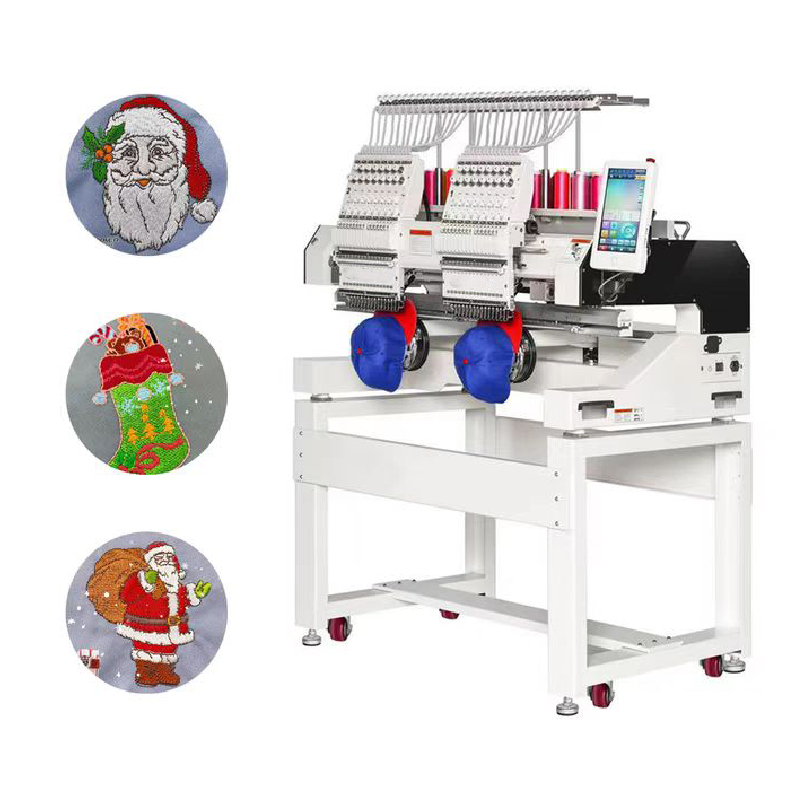
Beyond apparel, these machines are vital in home textile production for embroidering on towels, bedding, and curtains, enhancing aesthetic appeal and perceived value. In specialized fields, they contribute to automotive interior customization, producing high-end embroidered elements for vehicle seats and panels. The primary technical advantages stem from their automation capabilities: significantly reduced labor costs, consistent stitch quality unaffected by human fatigue, rapid design changeovers, and precise registration even on complex materials. Features like automatic thread trimming, automatic color change, and thread break detection further minimize downtime and operator intervention, contributing to higher overall equipment effectiveness (OEE).
For businesses aiming for efficiency and quality, investing in a robust automatic embroidery machine delivers substantial returns. The enhanced precision ensures that branding elements are consistently sharp and professional, vital for corporate uniforms and promotional items. The increased production speed allows for quicker fulfillment of large orders, giving companies a competitive edge in fast-paced markets. Moreover, the capacity for intricate, multi-color designs opens up new creative possibilities, allowing businesses to offer more complex and appealing products to their customers.
Product Spotlight: Latest Popular 2 Heads 15 Needles Flat Garment Pillow Towel Bag T-shirt Cap Embroidery Machine
Our flagship model, the Latest Popular 2 Heads 15 Needles Flat Garment Pillow Towel Bag T-shirt Cap Embroidery Machine, exemplifies the pinnacle of automated embroidery technology, designed specifically for versatility and high-volume production in diverse textile applications. This machine is an ideal solution for businesses requiring both intricate detail and efficient throughput. With two independent heads, it allows for simultaneous embroidery on two items, effectively doubling productivity compared to single-head units. The 15 needles per head provide a vast color palette for complex designs without the need for frequent thread changes, significantly streamlining the production of multi-color logos and artistic embellishments.
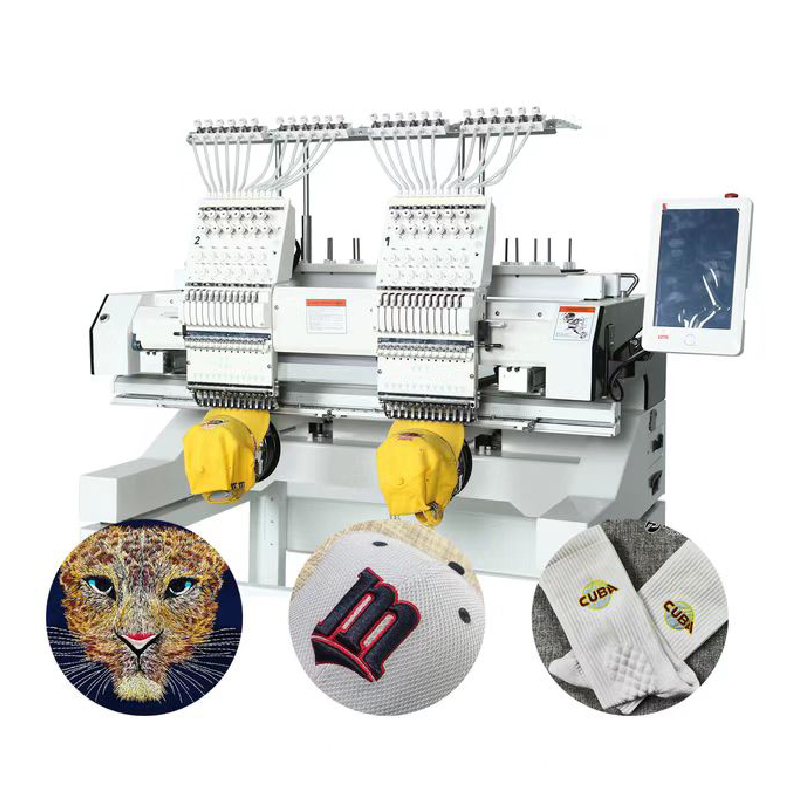
This particular automatic embroidery machine excels in its adaptability, handling flat garments like t-shirts, dresses, and towels with ease, while also featuring specialized attachments for precise cap and bag embroidery. Its robust construction ensures stability during high-speed operation, translating to superior stitch quality and minimal vibration. The intuitive touch-screen interface simplifies design loading, machine operation, and parameter adjustments, making it accessible even for operators with varying levels of technical expertise. Integrated thread break detection, automatic thread trimming, and an advanced bobbin winding system further enhance its efficiency and reduce manual oversight, making it a reliable workhorse for consistent, high-quality output.
Manufacturer Comparison & Our Competitive Edge
When evaluating an automatic embroidery machine, a comparative analysis of manufacturers is essential. Key differentiators include build quality, technological innovation, after-sales support, and customization capabilities. While some providers might offer a cheap 15 needle embroidery machine, it is crucial to scrutinize the underlying quality of components, the precision of the mechanics, and the robustness of the control software. Inferior build quality can lead to frequent breakdowns, inconsistent stitch quality, and higher long-term maintenance costs, negating any initial savings.
Comparative Analysis: Standard vs. Premium Automatic Embroidery Machines
| Feature Category | Standard Offering (e.g., Budget Brand) | Our Premium Solution (e.g., 2 Heads 15 Needles) |
|---|---|---|
| Machine Frame & Chassis | Basic welded steel, prone to vibration at high speeds. | High-grade heavy-duty steel, precision-machined, anti-vibration design. |
| Motor & Drive System | Standard stepping motors, limited precision, slower acceleration. | Panasonic/Dahao industrial servo motors, high precision, rapid acceleration, quiet. |
| Control Panel & Software | Basic LCD, limited features, less intuitive UI. | 10-inch HD Dahao touch screen, intuitive interface, advanced features (e.g., design preview). |
| Embroidery Quality | Acceptable, occasional skipped stitches or tension issues. | Exceptional, consistent stitch formation, minimal defects. |
| Lifespan & Durability | 3-5 years typical, higher repair frequency. | 10-15+ years under heavy use, low maintenance. |
| After-Sales Support | Limited remote support, slow parts availability. | Dedicated technical support, online diagnostics, readily available spare parts. |
Our commitment to quality is underscored by our ISO 9001 certified manufacturing processes and over 25 years of industry experience. We partner with leading component suppliers, ensuring that every automatic embroidery machine we produce meets the highest standards for performance and reliability. Our technical team works closely with clients to understand their specific needs, offering tailored solutions and ensuring seamless integration into their existing production lines. This dedication to excellence and comprehensive support distinguishes us in a competitive market.
Customization Solutions & Real-World Application Cases
Recognizing that no two businesses are alike, we offer extensive customization options for our automatic embroidery machine lineup. This includes tailoring machine configurations (e.g., specific head configurations for a multi heads embroidery machine), integrating specialized hooping systems for unique products, or providing bespoke software solutions for seamless workflow management. Our engineering team collaborates directly with clients to design machinery that perfectly aligns with their unique operational requirements, whether it's optimizing for specific fabric types, enhancing automation for particular garment structures, or integrating with existing enterprise resource planning (ERP) systems.
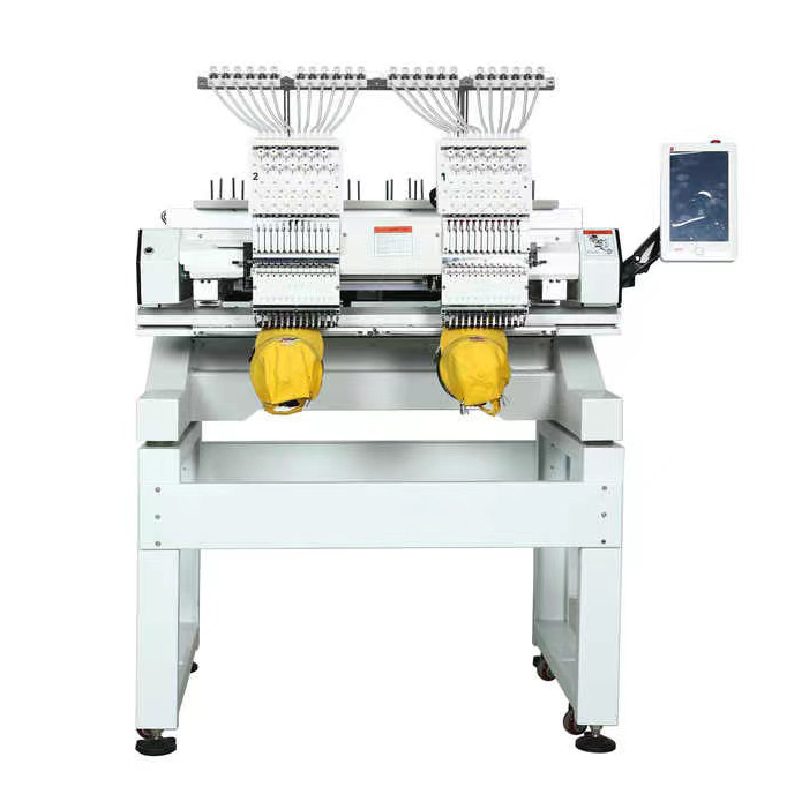
Case Study 1: Large-Scale Apparel Manufacturer
A leading apparel manufacturer in Vietnam required a solution to significantly increase their capacity for embroidered corporate uniforms and activewear. They previously used several older single-head machines, resulting in bottlenecks and inconsistent quality. We provided a customized fleet of 8-head, 15-needle automatic embroidery machine units, integrated with their existing CAD/CAM system. This led to a 300% increase in production throughput, a 15% reduction in material waste due to improved precision, and a 20% improvement in labor efficiency, enabling them to secure larger contracts and expand their market share. Their feedback highlighted the machines' robust performance and the exceptional stability of the multi-head operations.
Case Study 2: Boutique Customization & Promotional Products
A rapidly growing online store specializing in personalized gifts and promotional items faced challenges with scalability and consistent quality using smaller, less advanced machines. They needed a versatile machine that could handle a wide range of items, from cap embroidery machine projects to intricate designs on tote bags. Our 2-head, 15-needle machine was deployed, praised by the client for its ability to seamlessly switch between different hooping systems and its user-friendly interface. This enabled them to diversify their product offerings, reduce per-unit production time by 40%, and achieve a perfect quality rating from customers, driving significant growth in their bespoke customization segment.
Frequently Asked Questions (FAQ)
Common Inquiries About Automatic Embroidery Machines
-
Q1: What kind of maintenance does an automatic embroidery machine require?
A1: Regular maintenance includes daily cleaning of thread paths and rotary hooks, weekly lubrication of moving parts, and periodic professional servicing (typically every 6-12 months) for calibration and component checks. Our machines are designed for easy access to critical areas, minimizing maintenance complexity and downtime.
-
Q2: Can I use different types of threads and fabrics on your machines?
A2: Yes, our machines are designed for versatility. They can handle various thread types, including polyester, rayon, metallic, and specialty threads. They are compatible with a wide range of fabrics, from delicate silks to heavy denim, and even leather, provided appropriate needles and hooping techniques are used.
-
Q3: What is the typical delivery period for an automatic embroidery machine?
A3: For standard models, the typical lead time from order confirmation to delivery is approximately 4-6 weeks. Custom configurations or large multi-head orders may require 8-12 weeks. We ensure transparency throughout the process, providing regular updates on production and shipping milestones.
-
Q4: What kind of warranty and technical support do you offer?
A4: We provide a comprehensive 2-year warranty on all major mechanical and electronic components. Our dedicated technical support team offers remote diagnostics, troubleshooting, and online guidance. On-site support and training can also be arranged based on client requirements. Our commitment extends to ensuring readily available spare parts for the machine's entire operational lifespan.
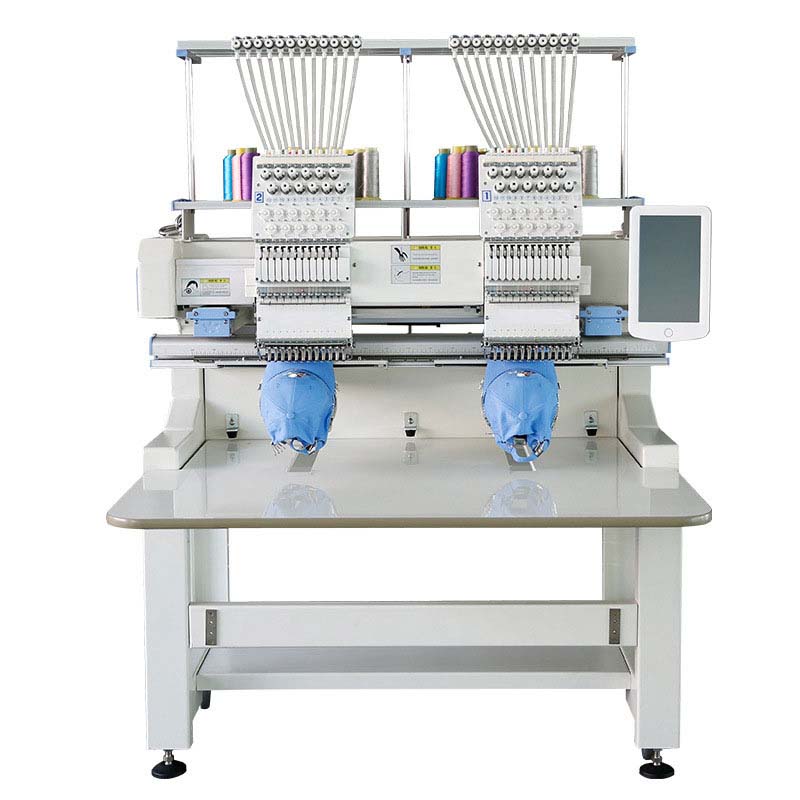
Conclusion: Elevating Your Production with Advanced Embroidery Technology
The investment in an advanced automatic embroidery machine is a strategic decision that promises not only enhanced production capabilities but also a significant competitive advantage in the dynamic textile and apparel industry. By leveraging cutting-edge technology, superior build quality, and comprehensive support, businesses can achieve unparalleled precision, efficiency, and versatility in their embroidery operations. Our commitment to delivering high-performance, durable, and adaptable machinery ensures that clients can meet current market demands while being prepared for future challenges. Choosing the right automatic embroidery machine is about investing in long-term reliability, consistent quality, and scalable growth.
References
- Market Research Future. (2023). Textile Machinery Market Research Report: Information by Type (Spinning, Weaving, Knitting, Finishing, Embroidery, and Others), Operation (Automatic, Semi-Automatic, and Manual), and Region – Forecast till 2030.
- Mordor Intelligence. (2023). Embroidery Machines Market Size & Share Analysis - Growth Trends & Forecasts (2024 - 2029).
- International Organization for Standardization. (2015). ISO 9001:2015 - Quality management systems – Requirements.
- European Parliament and Council. (2014). Directive 2014/30/EU on the harmonisation of the laws of the Member States relating to electromagnetic compatibility.
-
Affordable Automatic Embroidery Machines: Flat, Cap & Multi-Head
NewsAug.14,2025
-
Cheap Computer Embroidery Machine Price | Pro Cap Embroidery
NewsAug.13,2025
-
Best Industrial Embroidery Machines for Sale – Heavy Duty & Reliable
NewsAug.12,2025
-
Embroidery Machine Manufacturers: Best Buy & Industrial Models
NewsAug.11,2025
-
High Efficiency Multi Head Embroidery Machines | Flat & T-Shirt
NewsAug.10,2025
-
Computerized T-Shirt Embroidery Machines: Flat & Affordable
NewsAug.09,2025

Copyright © 2025 Xingtai Pufa Trading Co., Ltd All Rights Reserved. Sitemap | Privacy Policy
